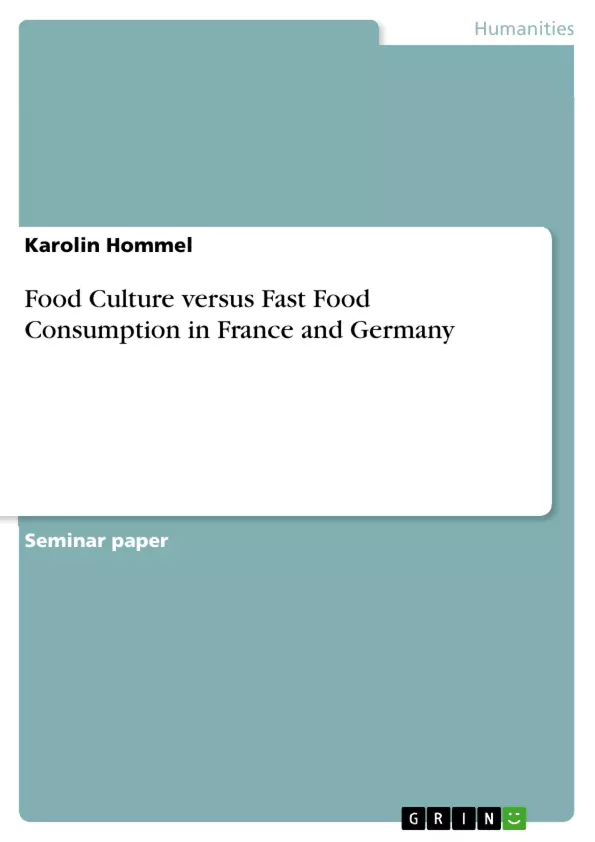By thinking of France, one often automatically considers its famous cuisine. France is one of the countries that is often referred to when considering a country with a rich food culture. French people have always been proud of it. They are known for their sophisticated kitchen, their creativity in pastries as well as fresh fruits, vegetables, herbs and grains grown in the fertile soil of the country. Furthermore, France is well known for its best wines in the world. Internationally, French restaurants have the image of their refined way of cooking with high quality ingredients and also high prices. Food is one of the great passions of the French.
A person’s diet often reflects the French heritage and social status. At the same time the country still undergoes a fast food boom and was currently identified as the second biggest fast food market in the world only outranked by the United States. The following paper addresses aspects of the French food culture focusing on fast food. Additionally, the French food culture regarding fast food will be compared to the status quo in Germany.
Table of Contents
- Introduction
- French Food Culture
- Traditional Food and Eating Habits
- Social Aspects of Food Culture
- The Fast Food Boom
- German Food Culture
- Traditional Food and Eating Habits
- The Role of Fast Food
- Fast Food in France and Germany
- Sales and Market Share
- Future Trends
- Conclusion
Objectives and Key Themes
This paper examines the relationship between traditional food culture and fast food consumption in France and Germany. It aims to explore how these cultures are evolving in the face of a growing fast food industry.
- Traditional food practices and cultural significance in France and Germany
- The impact of fast food on traditional diets and eating habits
- Social and economic factors driving fast food consumption
- The changing landscape of the food industry and the role of fast food chains
- Obesity rates and health implications of fast food consumption
Chapter Summaries
- Introduction: This chapter provides a brief overview of the topic, highlighting the importance of understanding food culture in France and Germany. It also introduces the research questions and methodology of the paper.
- French Food Culture: This chapter delves into the traditional food practices and eating habits in France. It discusses the cultural significance of food in French society and explores the social aspects of mealtimes. The chapter also examines the rise of fast food in France and its impact on traditional diets.
- German Food Culture: This chapter focuses on the food culture of Germany, similar to the previous chapter. It explores traditional German foods, eating habits, and the role of fast food in German society. The chapter also analyzes the consumption patterns and trends related to fast food.
- Fast Food in France and Germany: This chapter examines the fast food market in both countries, analyzing sales figures, market share, and future trends. It discusses the impact of fast food chains on the restaurant industry and the broader economic landscape.
Keywords
This paper explores food culture, fast food consumption, France, Germany, traditional cuisine, eating habits, social context, obesity rates, restaurant industry, fast food chains, market share, future trends.
- Citar trabajo
- Karolin Hommel (Autor), 2015, Food Culture versus Fast Food Consumption in France and Germany, Múnich, GRIN Verlag, https://www.grin.com/document/317892



